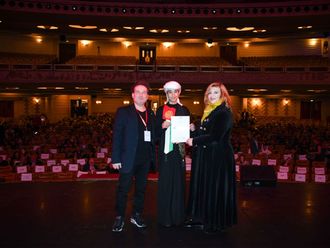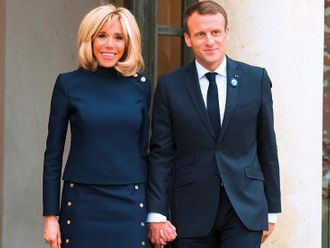
Why furniture design?
While studying interior architecture at Rhode Island School of Design, I took a course in furniture design which really interested me. It focused on finding new materials and mixing materials. Even with interior architecture, I like to start with the object – the chair, the dining table – and work around it to create a space. I found myself enjoying designing furniture more and more and the passion eventually became a career.
What prompted you to return to Lebanon after having lived abroad for most of your life?
Living abroad was very nice. I grew up in Japan but we lived in an Arab household within the Japanese environment. Since my schooling was [done by] all foreigners, I had a mix of cultures and religions around me. But you [crave] a sense of belonging that kind of haunts you throughout and as a child you’re a little bit lost. So I wanted to get back to my roots.
How have your experiences as a third-culture kid shaped your work?
By the time I arrived in Lebanon, I had subconsciously [imbibed] the distinct aesthetic values of all the places I had lived in. In Japan it’s about minimalism and bringing things down to its essence; America looks to the future while being pragmatic and practical, [hence] creating objects that were very functional. In the UK, the value of craft, the past and heritage and sophisticated design are prevalent, while in the Middle East it’s about ornamentation and emotional design. My work is a combination of all of this.
Tell us more about your philosophy of heartmade and how is it different from handmade?
Heartmade refers to the passion of the craftsman. It’s almost like cooking for someone you love – when you cook for someone that you really care for, the food is very good. If you’re angry, the food is really bad. When you’re passionate about the craft, you feel it in the pieces and it draws people in. Each piece I make has a story to tell.
Why do you work with artisans and incorporate handicrafts into your design?
It’s important to preserve craft and heritage. So, for instance when I visited Afghanistan, I decided to collaborate with 25 skilled artisans who were unemployed at the time. Moreover, artisans are the source of my inspiration. I never start with a finished product or idea in my head. I go to a craftsman or artisan, look at the way they work, I see how we can modernise the craft so that it’s more relevant to who we are today and our functionality. Then I create a form that brings out the best of this craft.
Tell us more about your collaboration with Ikea.
The LJUV Ramadan collection with Ikea is very special. We’re at completely opposite ends of the spectrum: It’s a global brand focusing on industrial design, whereas I’m a local brand that’s all about luxury craft. For me, the challenge was translating luxury design into industrial design. I understand the cultural nuances of Ramadan. Plus, the Swedish and Japanese philosophies of minimalism are similar.
What has been the most defining moment of your career?
When I moved to Beirut after working in London where I specialised in children’s furniture using wooden marquetry work, the Royal family of Jordan asked me to design children’s rooms for them. It was a defining moment because people started recognising the value of craft.
What is your opinion of Dubai’s design culture?
It’s become much more sophisticated, since I first exhibited in 2007 at XVA Gallery. At the time [the city] didn’t really have a big design culture. Initiatives such as Dubai Design Days and Downtown Design are preserving craft and creating a craft-based culture in the UAE, which is impressive.
Who are some women who’ve inspired you?
From a design point of view, architect Zaha Hadid, Spanish architect and designer Patricia Urquiola, and Iranian-French architect and designer India Mahdavi – unique women with specific identities in their designs – have inspired me. My mother used to sew and my grandmother would crochet. They’ve taught me the value of handicrafts.
Why is geometry such a recurrent theme in your work?
Growing up in Japan among different cultures was a struggle as I was always trying to find that one common language or element that every human being shares and would bring us together. I found the answer later in life in geometry, especially repetitive geometry. Every culture relates to geometry one way or another. In the Middle East it’s related to our identity as a religion but in Europe, it’s seen as exotic patterns and so it makes my work adaptable and reaches more people.











